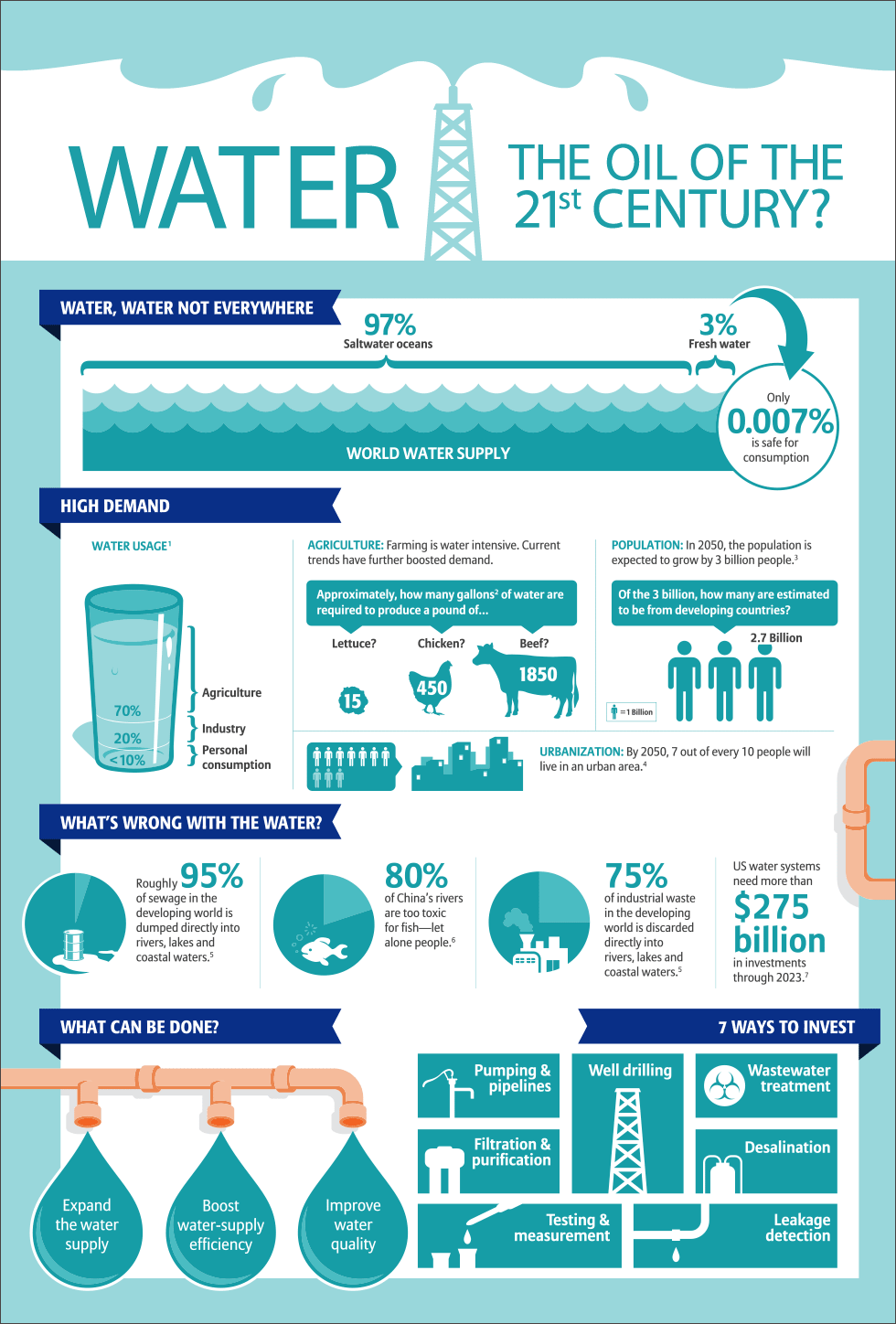Water 4 All
The water-food-energy nexus is central to sustainable development. Demand for all three is increasing, driven by a rising global population, rapid urbanization, changing diets and economic growth. Agriculture is the largest consumer of the world’s freshwater resources, and more than one-quarter of the energy used globally is expended on food production and supply. The inextricable linkages between these critical domains require a suitably integrated approach to ensuring water and food security, and sustainable agriculture and energy production worldwide.
Rising Demand
Water is a finite resource having to serve exponentially more people and usages, so ensuring everyone has access to a reliable supply is crucial to human survival and sustainable progress. As water resources become more stretched, the energy and food sectors’ dependence on water, and the fact that all three underpin several of the Sustainable Development Goals, means that decision-makers in all three domains are now increasingly focusing on water resource management, ecosystem protection and water supply and sanitation as part of their policy and practice.
Rising Demand
Water is a finite resource having to serve exponentially more people and usages, so ensuring everyone has access to a reliable supply is crucial to human survival and sustainable progress. As water resources become more stretched, the energy and food sectors’ dependence on water, and the fact that all three underpin several of the Sustainable Development Goals, means that decision-makers in all three domains are now increasingly focusing on water resource management, ecosystem protection and water supply and sanitation as part of their policy and practice.
Water Overview
The Earth is a single planet with a closed system... That means that what is here is what we have.
Without water there is no life on this planet, so why do we treat water as if it has no value, like a commodity?
The infographic below points out that there is a fixed amount of fresh water (3%) before we take pollution into account.
Flint Michigan is the tip of a growing iceberg that needs to be addressed now. Here in Kitsap County, we have the opportunity to begin applying education and cost effective technologies that can lead to our regional sustainability and allow us to actually thrive moving into the future.
Without water there is no life on this planet, so why do we treat water as if it has no value, like a commodity?
The infographic below points out that there is a fixed amount of fresh water (3%) before we take pollution into account.
Flint Michigan is the tip of a growing iceberg that needs to be addressed now. Here in Kitsap County, we have the opportunity to begin applying education and cost effective technologies that can lead to our regional sustainability and allow us to actually thrive moving into the future.
Addressing Water Ecosystems
Water reuse has been viable for over 40 years, the technology above is an easy, cost effective method to expand capacity of aging plants and drastically reduce water wastage and increase availability. These "decentralized" units can be run on renewable energy and have shorter distances for easier maintenance and repairs. The redundancy and localization provides far greater water security and the release of processed water a cleaner environment.
